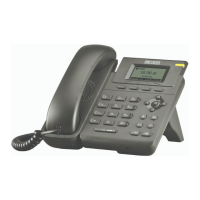Matrix SPARSH VP110 User Guide 319
Advanced Maintenance
This chapter provides general information for maintenance and troubleshooting of some common problems using
advanced features incorporated in the IP phone.
IP phones can provide feedback in a variety of forms such as log files, packets, status indicators and so on, which
can help you to easily find the system problem and fix it.
The following are helpful for better understanding and resolving the working status of the IP phone.
• Viewing Log Files
• Capturing Packets
• Enabling Watch Dog Feature
• Getting Information from Status Indicators
• Analyzing Configuration File
For more information about common problems and how to resolve them, refer “Troubleshooting”.
Viewing Log Files
If your IP phone encounters some problems, commonly the log files are needed. You can export the log files to a
syslog server or the local system.You can also specify the severity level of the log to be reported to a log file. The
default system log level is 3 (Changes to this parameter via web user interface requires a reboot).
In the configuration files, you can use the following parameters to configure system log settings:
• syslog.mode: Specify the system log to be exported to a server or local system.
• syslog.server: Specify the IP address or domain name of the syslog server to which the log will be
exported.
• syslog.log_level: Specify the system log level. The following lists the log level of events you can log:
0: system is unusable
1: action must be taken immediately
2: critical condition
3: error conditions
4: warning conditions
5: normal but significant condition
6: informational
For more information on the system log setting parameters, refer “Appendix D - Configuration Parameters”.
To configure the level of the system log via web user interface:
• Click on Settings->Configuration.

